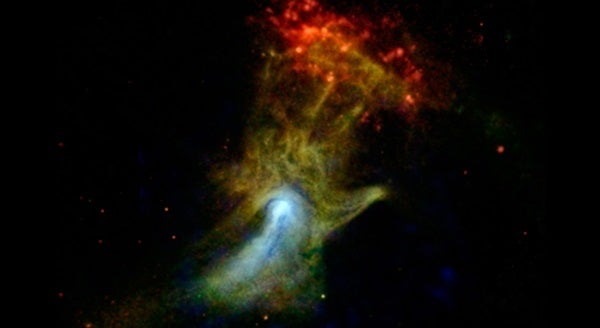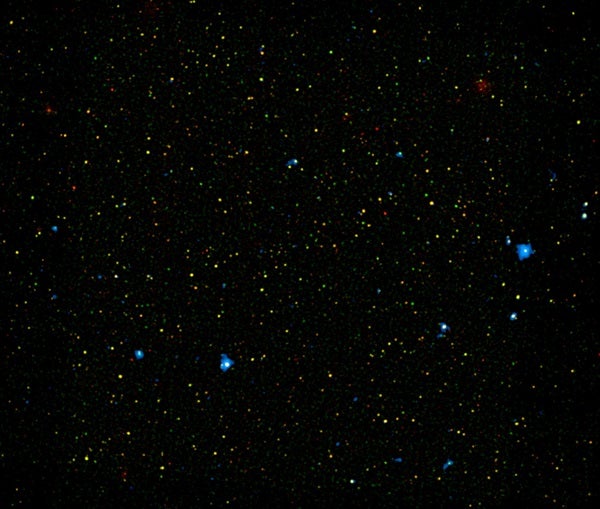“NuSTAR’s unique viewpoint in seeing the highest-energy X-rays is showing us well-studied objects and regions in a whole new light,” said Fiona Harrison from the California Institute of Technology in Pasadena, California.
NuSTAR launched into space June 13, 2012, on a mission to explore the high-energy X-ray universe. It is observing black holes, dead and exploded stars, and other extreme objects in our Milky Way Galaxy and beyond.
The new “Hand of God” image shows a nebula 17,000 light-years away, powered by a dead, spinning star called PSR B1509-58 (B1509). The dead star, called a pulsar, is the leftover core of a star that exploded in a supernova. The pulsar is only about 12 miles (19 kilometers) in diameter but packs a big punch. It is spinning around nearly seven times every second, spewing particles into material that was upheaved during the star’s violent death. These particles are interacting with magnetic fields around the ejected material, causing it to glow with X-rays. The result is a cloud that looks like a hand.
One of the big mysteries of this object, called a pulsar wind nebula, is whether the pulsar’s particles are interacting with the material in a specific way to make it appear as a hand, or if the material is in fact shaped like a hand.
“We don’t know if the hand shape is an optical illusion,” said Hongjun An of McGill University in Montreal, Canada. “With NuSTAR, the hand looks more like a fist, which is giving us some clues.”
“This is a hot topic in astronomy,” said Francesca Civano of Yale University in New Haven, Connecticut. “We want to understand how black holes grew in the past and the degree to which they are obscured.”
The ongoing research will help explain how black holes and galaxies grow and interact with each other.











